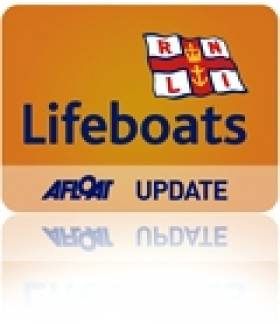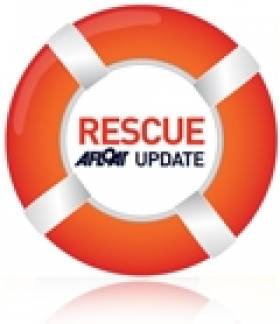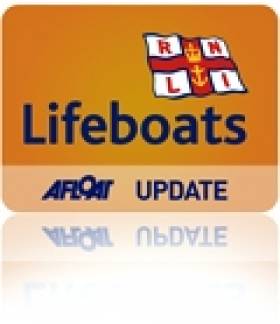Displaying items by tag: dismasted
Portrush Lifeboat Assists Dismasted Yacht
#RNLI - Portrush RNLI assisted the crew members of a yacht that lost its mast while out sailing on the River Bann this morning.
The volunteer lifeboat crew were alerted by an observer and launched both the all-weather lifeboat and the inshore lifeboat just before 10am today Tuesday 6 August. The inshore lifeboat was later stood down.
The yacht in question had four people on board and had lost her mast and rigging due to an earlier collision with a navigation marker.
Portrush RNLI came alongside the yacht and passed equipment to her crew to help to stabilise the rigging.
Once this was done, a rope was successfully passed to the yacht to start the tow. This exercise was complicated because the yacht was stuck on the bottom of the river by the rigging and the keel, and the tide was falling fast.
Added to this, the river flow was quite strong, thus making conditions slightly more difficult.
However, due to the skill of the lifeboat crew and the fact that the winds were light, the tow rope was successfully attached and a long slow tow was started.
Mark Mitchell, deputy 2nd cox, said: "This was a tricky operation as the rigging and the sail from the yacht were still in the water, which made progress slow. We had to move at a reduced pace to ensure the tow would be successful. We had to move slowly into deeper water and adjust the tow accordingly."
Lifeboat operations manager Robin Cardwell added: "All the training and experience of our crew was required to ensure a successful outcome of this service. They judged conditions well and made sure the crew and yacht was brought to harbour."
The lifeboat crew towed the yacht to Coleraine Harbour and returned to base.
Navy Tows Stricken Norwegian Yacht To Shore
#Rescue - RTÉ News reports that a Norwegian couple have been rescued after their yacht suffered damage off the south coast.
The vessel sailed by the couple in their late 60s apparently dismasted some 160 miles off the Cork coast en route from the Azores to the Shetland Islands.
They were discovered by a passing fishing trawler early yesterday (21 May) and assisted last night by the Naval Service vessel LE Aoife, which is currently towing the stricken yacht to Castletownbere.
Lt Captain Erica Downing of the LE Aoife told RTÉ that the couple were "extremely lucky" to be spotted by the French fishing boat, having not seen any other sea traffic the previous fortnight.
RTÉ News has more on the story HERE.
Dismasted Yacht Brought Back to Crosshaven Berth
Cork's Crosshaven inshore lifeboat launched at 1.25pm today to reports of a 37' dismasted yacht off Roberts Head on the Cork harbour coastline. (See video below)
The crew of Alan Venner, James Fegan and Vince Fleming made best speed to the yacht about 5 miles from the station.
On arrival the crew helped secure the remains of the mast to the toe rail before escorting the yacht back to Crosshaven.
The lifeboat gave the yacht an alongside tow into it's marina berth as it entered Crosshaven.
Weather conditions were good with a force 5 South westerly wind. The lifeboat was rehoused and ready for service at 16.30.

























